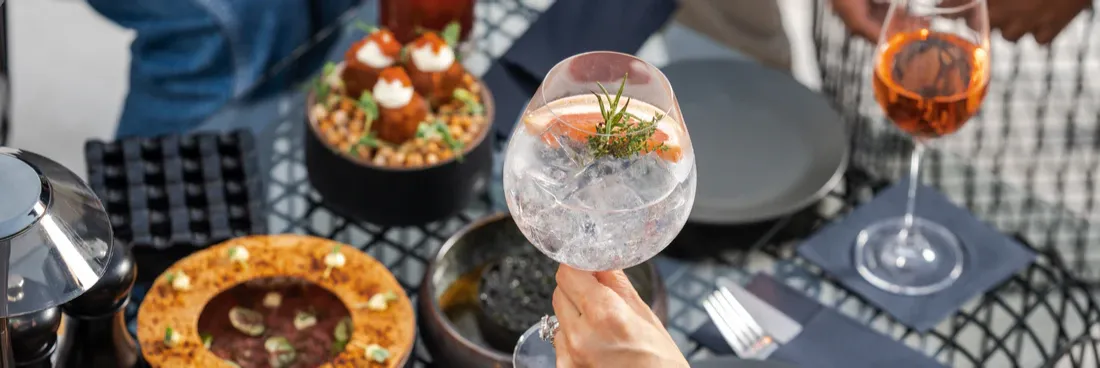
Hospitality in the Age of Volatility: Strategy Beyond the Menu Price
By:- David Zaltzman
After navigating three years of unprecedented food cost inflation across our portfolio, I’ve learned that the answer isn’t on the menu – it’s in how you think about the entire operation. While most restaurants are raising prices and shrinking portions, smart operators are doing something completely different, and here’s the surprising part: Guests are happy!
The current economic landscape, marked by relentless inflation, supply chain disruptions, and soaring commodity costs, whether for raw materials or essential foodstuffs like eggs and beef presents an unprecedented challenge to executive food and beverage management. The scope of this disruption extends far beyond household budgets; it requires a fundamental recalibration of our operational strategy.
Our goal is not to lower the guest’s expectation, but rather to thoughtfully meet their expectations where they are, ensuring that the essence of warm hospitality and quality service remains paramount. Providing that full sensory experience is, after all, the crucial offset when guests are confronted with rising prices.
Here is how successful hospitality leaders are adapting, focusing on proactive long-term solutions that drive both culinary excellence and financial control.
The Strategic Kitchen: Rethinking the Plate
Volatility demands that F&B executives adjust their value proposition by finding creative ways to achieve more with less, or with different, raw materials. This starts with a data-driven approach to menu engineering:
- Menu Optimization via the 80/20 Rule: We must objectively evaluate what sells. By applying the principle that most sales come from a fraction of the menu, we can determine which items are causing waste and losing money due to low demand. Streamlining the menu ensures we stock exactly what we need to keep guests happy and minimize ingredient spoilage.
- Embracing Vegetable-Forward Dishes: Highlighting creative, interesting vegetable-based dishes is not just a trend; it’s a cost-saving measure that aligns with evolving guest preferences for healthier options. We’ve successfully shifted focus away from high-value proteins by featuring produce more prominently, managing the overall cost dynamic without compromising flavor.
- Thoughtful Portion Control: Delivering a fulfilling experience does not always require massive portions. Our teams are reassessing protein sizing and plating techniques to better manage margins. By calibrating portions and evaluating whether smaller cuts can still exceed guest satisfaction, we align cost targets with guest expectations. This includes moving away from the assumption that every diner needs an eight-ounce burger or a massive t-bone steak.
Operational Resilience Through Smart Design
Controlling costs and driving revenue in a volatile market requires collaboration between F&B management and design teams. Operational efficiency must be engineered into our physical spaces:
- Leaner Staffing through Design: We are designing spaces that function effectively across multiple services. By allowing functional areas to overlap, we enable minimal staff to cover multiple roles, preventing “dark zones” during off-peak hours. For properties adopting hybrid staffing models, switching from counter service at lunch to full service at dinner, the space must remain visually transparent and inviting.
- Tech Integration and Equipment Investment: The biggest expense is a project that doesn’t work. We must invest in up-to-date house equipment, such as high-efficiency refrigeration and induction cooking lines. These technologies not only respond to environmental priorities but also generate significant operational savings over time.
- Designing for Modularity and Adaptability: Flexible design ensures that operators can work with what is available in the current supply chain without sacrificing brand consistency. This includes tech-integrated back-of-house spaces to support leaner production and flexible storage zones that accommodate erratic receiving schedules.
Cultivating Trust: The Power of Honest Partnership
In a fluid food market, the stability of our supply chain is directly correlated with the strength of our relationships.
- Prioritizing Local and Domestic Sourcing: We are actively reducing reliance on unnecessary imported products. Instead, we work directly with trusted local and domestic manufacturers, often streamlining our inventory (SKUs) and ensuring consistent, high-quality ingredients across our portfolio.
- Deepening Vendor Relationships: It’s crucial to cultivate relationships with local vendors, farmers, and producers, from oyster farmers to produce farms. We must track market shifts and pricing trends daily, allowing our procurement teams to respond rapidly to changes. This level of oversight ensures we are always making informed decisions that protect both quality and profitability.
- Supplier Collaboration: We encourage our culinary teams to manifest deep partnerships with suppliers, even hosting dinners and training sessions with local farmers. Nobody is better equipped to speak about the quality and nuances of the ingredients than the people who grow them. This thoughtful, brand-wide commitment ensures we balance cost control, sustainability, and quality.
Sustainability as a Lever for Profitability
Sustainability is not just a social responsibility; it is a critical lever for cost control, operational excellence, and value perception for our guests.
- Hyper-Local Sourcing and Waste Management: We are satisfying the growing popularity of locally sourced food by implementing on-property herb and produce gardens and edible landscaping where possible. Internally, we are building waste-sorting infrastructure and compost collection areas into new and existing kitchens to reduce food waste.
- Innovative Product Development: We view sustainability as a path to innovation. By partnering with manufacturers, we can develop proprietary, cost-effective products, such as plant-based alternatives, designed to meet evolving guest demand while efficiently managing our cost structure.
- Designing with Natural Efficiency: Simple design choices, such as maximizing natural daylight and passive ventilation, not only create a more authentic ambiance but also measurably reduce utility consumption and operating costs.
In summary, the key to success in this ever-changing market is being ever-changing ourselves.
By focusing on smart sourcing, rigorous menu engineering, and collaborating closely with design and procurement partners, we can navigate economic uncertainty, control our bottom line, and continue to deliver the warm, elevated experience our guests demand. Success is found in calculating what guests truly value and delivering that profitably.




